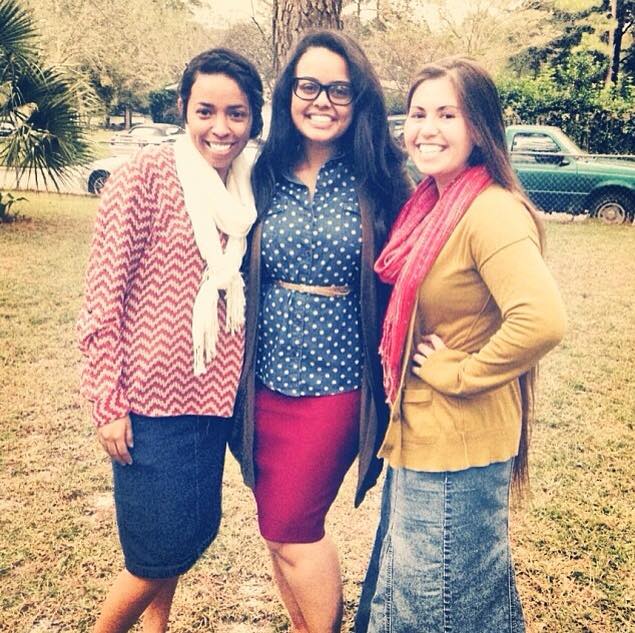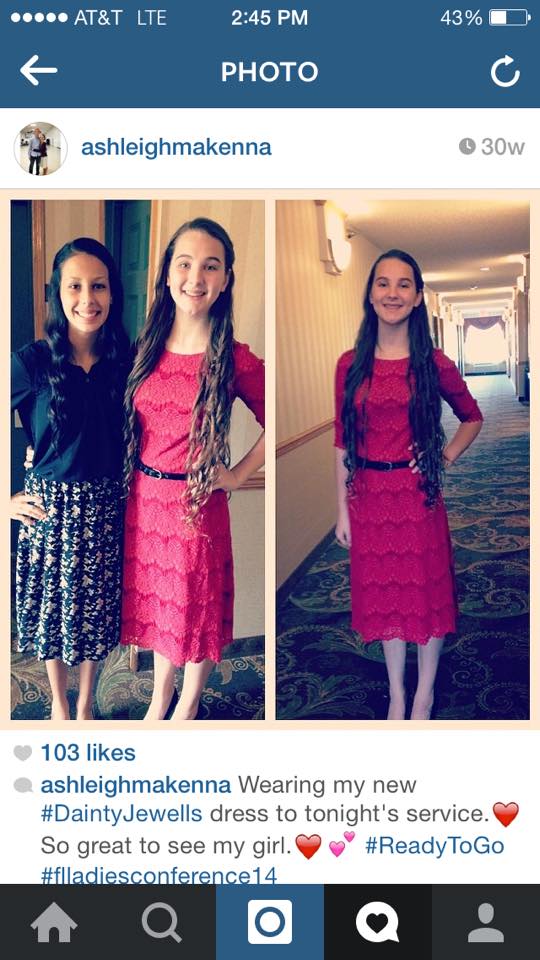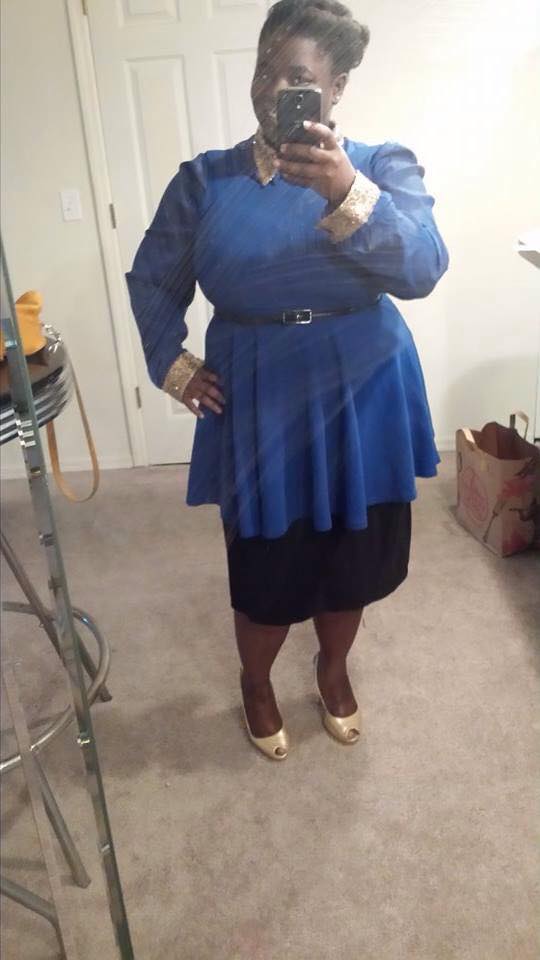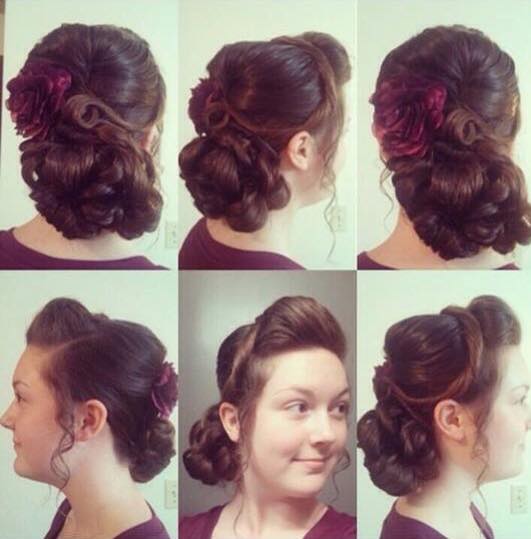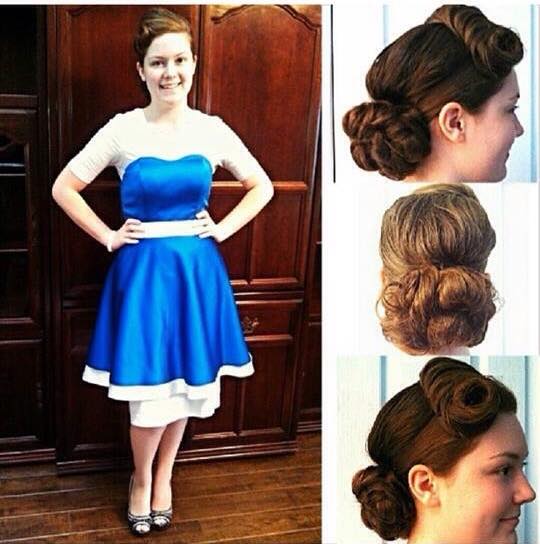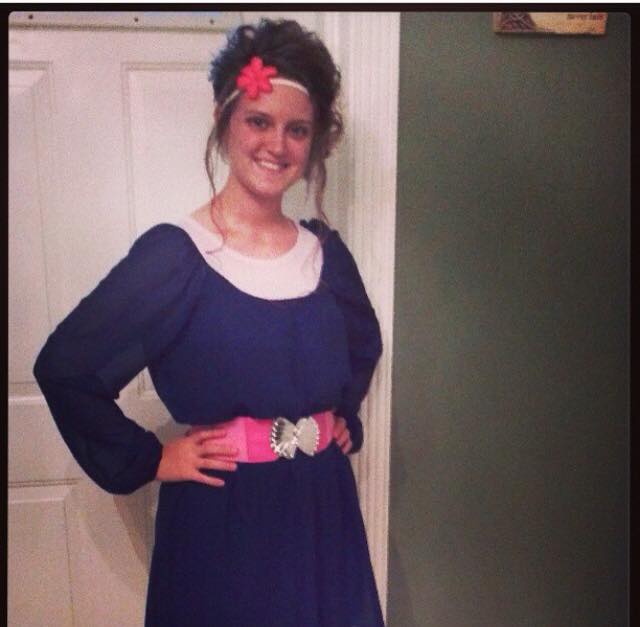*A guest post from Megan Geiger.
Thank God for winter.
Summer in Florida is not the easiest time to be Apostolic. With temperatures in the high 90’s and enough humidity to make the mosquitoes grumpy, the daily task of choosing an outfit becomes something of a test of ingenuity.
As an Apostolic Pentecostal, I belong to a group of believers that adheres to standards of dress that promote modesty, based on scriptural interpretations of covering with a little Bible belt flavor and fashion thrown in. That means that my body is covered from my knees to my neck to the middle of my bicep in every season, no matter the heat index.
Today’s fashion world and shopping scene present some challenges to the Apostolic girl looking for modest clothing. Outfits are often feats of layering, pieced together from store-bought articles that would be considered immodest by themselves. Knee-length pencil skirts are often too tight to be worn alone, but are perfect for lengthening the hem of a cocktail dress that only falls to mid-thigh, sleeveless tops are only wearable under jackets or as a way to raise the neckline of another shirt, and thin, long-sleeved undershirts are worth their weight in platinum as all-purpose coverage under sleeveless dresses, tank-tops, and sheer materials. On any given day an Apostolic girl may leave her house wearing two or three tops and multiple skirts (never pants, by the way, as those are considered to be “the apparel of a man”).
A solution to this problem of overdressing would be to revert to making our own clothing, sewing modest pieces from a single piece of fabric and leaving the layers for the snowbirds. But for us, an essential part of living our Christian walk “in the world but not of the world” is looking modestly stylish, approachable, and even attractive. It simply won’t do to just walk away from modern fashion and resort to homemade gingham shifts; there’s a great feeling of accomplishment that comes with taking a “worldly” aesthetic and turning it into something holy, and even haute.
That’s not to say that our style choices allow us to blend in. On the contrary, we’re supposed to stick out; as evangelicals with a world to save, the way we style our bodies is sometimes our greatest missionary resource, opening doors for non-threatening conversations with strangers. A big part of that is the hair.
Oh, the hair.
Based on several verses, 1 Corinthians 11 adjures women to enter sacred spaces with their heads covered and also say that long hair is a glory for females. The majority of Apostolic women choose to leave their hair uncut. While hair length depends largely on genetics and diet, many women sport tresses that fall well past their waists, some with locks that drag the ground, a living rebuttal to the myth that split ends prevent growth. For many of us, our hair is a canvas for artistic expression, a marker of our identity.
And let me tell you, we’ve gotten good at fixin’ it.
Anyone who believes that hair teasing died with the 1980’s has never set foot in an Apostolic rally or convention. While the days of using mini cereal boxes and paper towel rolls as structural aids to support massive beehive ‘dos are gone, big hair has never fallen out of vogue completely. Each stylist has her own set of tools and tricks to use in sculpting her Sunday silhouette. Even loyalty to particular brands of hairspray, mousse, bobby pins, clips, and volumizing products is fierce. At important events, like national conferences, women can expect to spend anywhere from twenty minutes to an hour on their hairdos, rendering striking results. Styles vary from couture, asymmetrical constructions of spirals and braids to slightly more tame arrangements that resemble something from a wedding magazine or a prom picture. Even the most ornate styles are tested before service to make sure they will stay in place throughout the vigorous worship that accompanies Pentecostal devotion; bobby pins make mean shrapnel if flung with enough speed during a good “shout song.” However, it’s expected that we’ll all leave service looking a little rough, since worship isn’t about looking pretty and the hair and clothes are less about looking good and more about being a part of the community.
To be honest, a well-layered outfit and a well-coiffed hairdo has little to do with piety and more to do with identity. It would be easy to adhere to our standards of modesty without bothering so much with fashion, and some ladies do choose to stick to more low-maintenance styles. Still, for plenty of young women, experiments in Apostolic fashion are a way to stay separated from ‘the World’ while remaining tied in to a larger community of practitioners. It’s a marker of belonging, and a common aesthetic that we can be proud of, despite feeling different in the context of mainstream American culture.
All of us Apostolic girls have at some point lived the following scenario: a familiar silhouette catches my eye in a crowded mall or at a theme park. The woman walking towards me is wearing a skirt that falls well past her knee, a long-sleeved shirt, and a contrasting camisole that covers her chest nearly to her collarbone, despite the heat of the day. I quickly check her wrists and ears for jewelry; there is none. Another covert sweep confirms that she isn’t wearing any noticeable makeup. A slightly too-ornate bun at the back of her neck seals the deal; she’s one of us. If our eyes meet, we exchange a quick smile and perhaps a small wave.
Maybe it’s a sign of solidarity, of letting each other know that we’re not alone in the struggle to be different from the norm. Or maybe it’s just an appreciation of something in others that we see in ourselves. The Pentecostal “Namaste.”
Either way, it’s assurance for each of us that our culture is being preserved and promoted, and that our distinctiveness has neither been swallowed up by worldly fashions nor succumbed to dowdiness. It reminds us that our bodies are the billboards of our faith. Even during long-sleeved Florida summers, it’s something we prize.
*Thanks to Megan Geiger for her guest post. Megan is a fellow graduate student at University of Florida and received her B.A. in Spanish with a dual minor in Anthropology and English Literature from the Harriet L. Wilkes Honors College of Florida Atlantic University, where she was chosen as the Stan and Renee Wimberly Scholar for the class of 2014. Her undergraduate thesis focused on the changes in the social discourses present in an archive of sermons from a Pentecostal church, and she aims to continue in that vein of research during her time in the Master’s program. Her other research interests include Pentecostalism and immigration, Pentecostalism in Latin America, American religious history, and the role of women in Christian fundamentalism. She is an active member of the United Pentecostal Church, International.
*This post is also available at Faith Goes Pop with Read the Spirit and Sacred Duty with Houston Belief.
